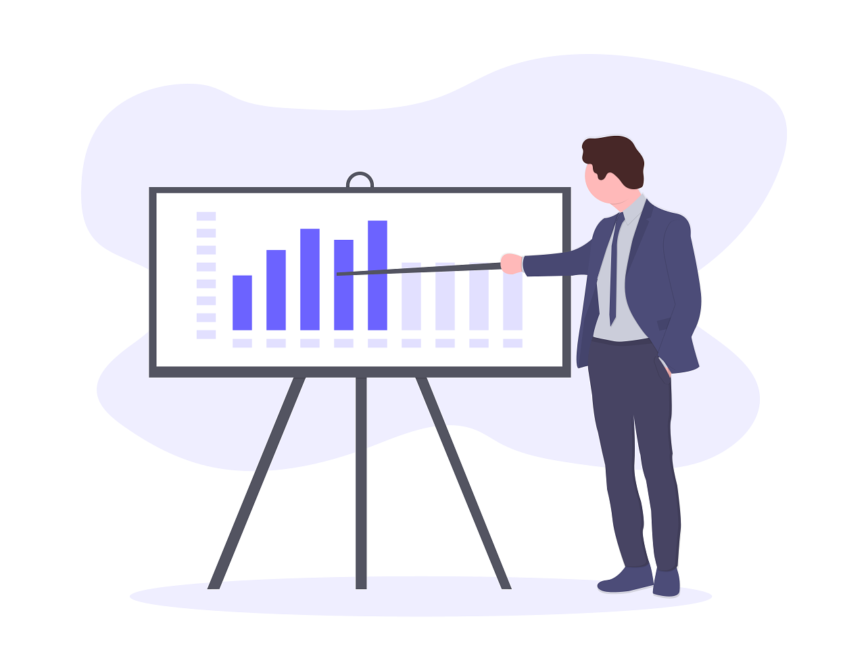In Part 1 we built the foundations and established a framework for our Go-To-Market fit experiment. It is now time to look at the first component of our Revenue Equation: Lead Velocity Rate (LVR).

We already introduced LVR as a measure of the rate at which qualified pipeline is created. Holding everything else equal, if you are growing qualified leads by say 10% month over month, revenue will also increase by 10% after an average sales cycle length. Therefore, you should target an LVR of 8% if you are looking to double revenue within a year, 16% to triple revenue etc.
Cracking the code on LVR means that you have figured out a way to build pipeline predictably. This is THE most important lever to grow Net New ARR and create hypergrowth, and unfortunately, often the most overlooked.
You can have the best product and the happiest customers but if LVR is not growing, bookings will eventually flatline. Your competition will run laps around you or worse, hit the accelerator pedal before cracking the code on LVR and the following will almost always happen:
- Revenue growth will be a rollercoaster and forecasting consistently off
- Your salespeople will complain about the quality and/or quantity of leads
- A large portion of your reps will be missing quota affecting sales morale and your employer brand
- Attrition and executive shuffles will happen which will further delay growth
You will be tempted to fix your sales process or hiring but more often than not, the solution is to learn to build pipeline predictably. Sales numbers are a lagging indicator, LVR is your number one leading metric. That’s the reason we are addressing it first in our Go-To-Market fit experiment. In fact, until you figure out how to grow LVR, nothing else matters really.
Methodology
Let’s look at the four macro stages of a typical funnel: Prospect, Lead, Opportunity, Customer. For now, we will only concern ourselves with the first two ratios: Prospect to Lead, in other words your Connect Rate; Lead to Opportunity, in other words your Conversion.

You probably landed your first 10-20 enterprise customers leveraging your network or selling to the 10-15% of the market who could be considered early adopters. In order to reach Go-To-Market fit and scale rapidly you need to figure out how to sell to mainstream buyers. It starts by:
- Figuring out how to get in front of them in a reasonably efficient way (connect).
- Figuring out how to quickly assess whether they are the right fit for your solution (convert).
- Learning from (1) and (2) and iterating to adjust who you target and what you talk to them about with the goal of improving your Connect rate and Conversion rate beyond benchmarks.
Once you have reached benchmark connect and conversion rates, you can predictably grow your pipeline by increasing your overall effort (i.e. the number of prospects you reach out to). That doesn’t mean that you should stop trying to optimize for better conversation rates but it will become increasingly difficult. If you picked a target market that is large enough, it is much easier to double your pipeline by doubling your effort instead of hitting the local maxima problem of optimization.
We will look at what appropriate connect and conversion rates look like in future posts. For now, just note that the type of leads you have will determine what to expect in terms of benchmarks.
Types of Sales Leads
There are three types of sales leads:
Organic – these leads come from referrals created from networks, relationships and word of mouth. The most effective way to grow organic leads is by delighting your customers and making them so successful and happy that they refer others and remain as customers for years.
Inbound – these leads come from your own efforts to get potential buyers to find you. This is typically achieved through one-to-many marketing campaigns, such as content and inbound marketing.
Outbound – these leads come from your own efforts to find potential buyers – typically through targeted outbound prospecting and/or business development campaigns. In this model a Sales Development Rep (preferably) works through a target list, calling, emailing, messaging on social media or using any other technique that helps them connect with a prospect and get appointments.
Each type of leads have their merits in helping you build pipeline. They come with their own expectations in terms of conversion rate, ACV, sales cycle length and methodology. The GTM model you land on will ultimately determine which type(s) works best for your business, in what mix or ratio and what level of investment is required by each to grow your pipeline.
Start with Outbound
Regardless of your GTM assumption, however, I would strongly recommend starting with Outbound for a few reasons:
Building organic pipeline is a long game achieved through a repeatable Customer Success program and function to ensure your customers are successful and happy.
If your solution has a high ACV then outbound is probably going to be your best bet anyway. Decision Makers that have purchase authority above 100K won’t typically have time to watch your webinar or read your blog post. Unless you have a great flywheel model, you will struggle to build pipeline through inbound marketing until you become an established brand.
Even if your ACV is too low to justify having a team of salespeople (i.e. under $3K), outbound is still the best place to start. The worst thing that can happen is that you will talk to some customers and learn something. Is it a viable model for you long term? No, but just as with product development, it’s ok to do things that don’t scale initially.
Once you have figured out how to do outbound, you will get much smarter at inbound since you will have tested and proven ideas on messaging and ideal customer targets. As an added bonus, your reps will have already learned not to be dependent on inbound leads and have more control over their destiny. They now have the option to reach out to prospects earlier in the process, target higher level decision makers and close larger deals.
Finally, there is a misconception that inbound marketing is free and outbound prospecting is too expensive a channel to implement. Inbound is not free and while an inbound lead costs 62% less than an outbound lead to generate, the ROI of outbound leads can be degrees of magnitude higher. When outbound is done well, reps are targeting higher level decision makers earlier in the sales cycle and setting the table so that there is less competition, higher win rates and most importantly they are closing much larger deal sizes. Spending 62% more on leads to go from low 5-figure deals to 6 or 7-figure deals is a no brainer.
In the next few posts we will touch on each type of leads individually starting with Outbound. We will look at when they are the best fit, what conversion benchmarks to strive for and provide a few tips and best practices.
Thanks for reading.


